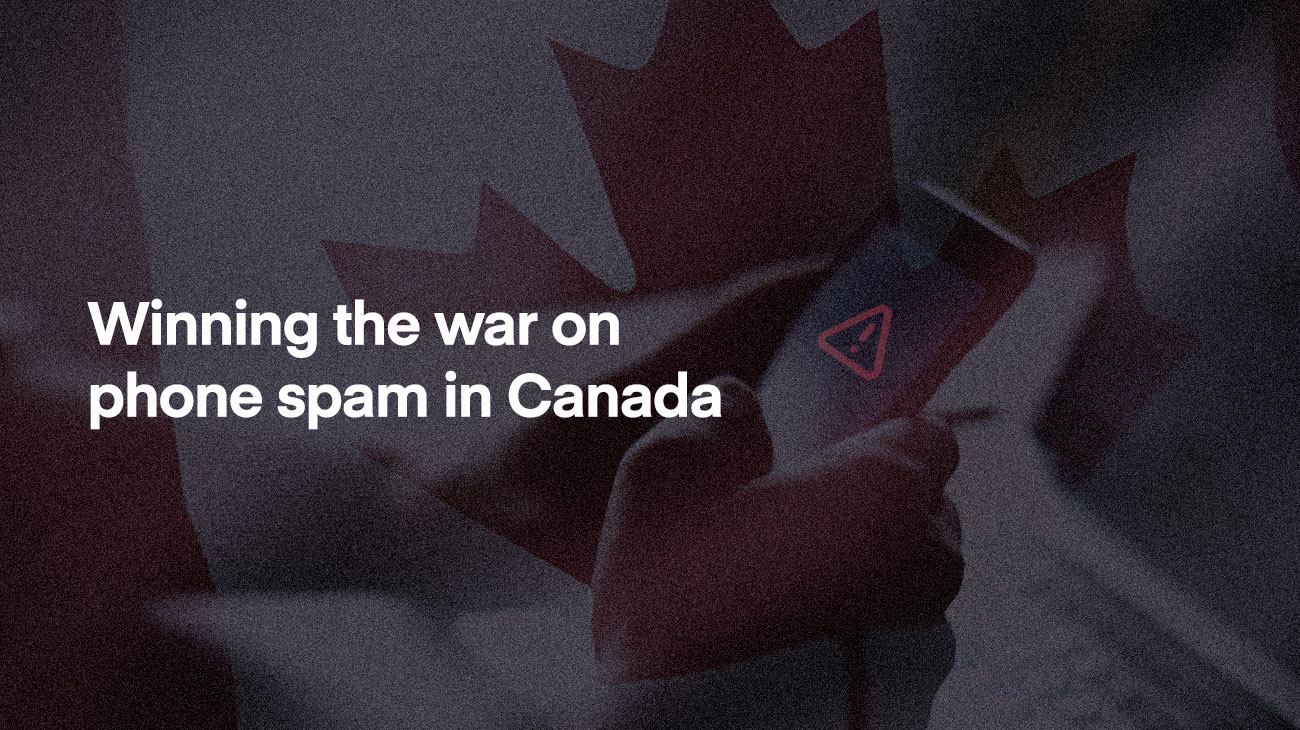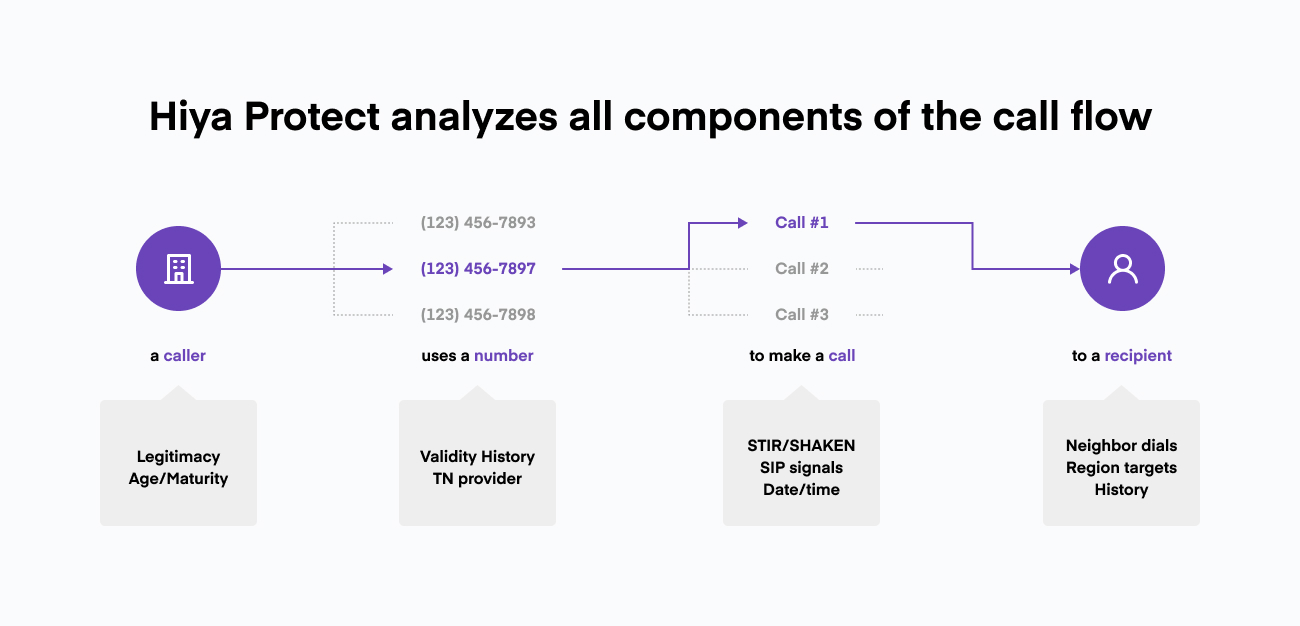
Hiya representatives attended and presented at the Canadian Telecom Summit, held Nov. 6-8 in Toronto. Hosted by the Canadian Telecommunications Association, the annual event attracts the most influential individuals and companies shaping telecommunications and information technology in Canada.
This year’s Canadian Telecom Summit included an exhibit hall, keynote presentations, and panel discussions from thought leaders throughout the industry. Topics included cybersecurity, governmental regulations, AI, digital innovation, and even environmental sustainability.
One in five unidentified calls in Canada is spam
During the Summit, Hiya’s Director of Product Management, Jonathan Nelson, and Vice President of Business Development in Canada, Tony Janusky, gave a presentation titled Voice fraud, the threat of Generative AI, and winning the war on phone spam in Canada.
Janusky set the stage by providing statistics about spam and fraud calls in Canada. According to the Canadian Anti-Fraud Centre’s annual report, Canadians lost 531 million Canadian dollars to fraud in 2022, and the agency estimates that fewer than half of fraud cases are reported. The report showed that 30% of those scams were perpetrated using a phone call — more than any other means, including email and social media.
Hiya’s data show that Canadians receive an average of 4-5 monthly spam calls per person, and 21.5% of incoming unidentified calls are spam (fraud or nuisance). Common in Canada are phone scams involving Amazon, banks, credit cards, and air duct cleaning.
Read Hiya’s Global Call Threat Report for more details about phone spam in Canada
Scammers use AI and other sophisticated tools to fool victims
Nelson said scammers are using various high-tech tools to pull off their schemes, including call automation, cloud computing, voice-over-internet, and number-spoofing.
“The scam industry is professional, organized, and armed with a toolset designed to keep them in business,” Nelson said.
Most worryingly is the emergence of new technologies and generative AI that can ease the life of the scammer, such as:
-
Speech augmentation to remove the accents of scammers
-
Replacing scam agents with automated bots
-
Creating new scam scripts using AI
-
Voice cloning
-
Tailored attacks targeting a specific person or company
According to Nelson, the most invasive is voice cloning, where a fraudster obtains a voice clip, clones the person’s voice, and uses that voice to fool a relative, co-worker or other individual. He showed how scammers can conduct research on LinkedIn, capture audio clips from YouTube, and use apps readily available to the public to clone a voice and spoof the phone number.
“Gen AI enables scammers to mass-produce previously hand-crafted campaigns,” he said.
Fighting back against scammers
Although fraudsters may use high-tech tools, the battle against phone scammers is not lost. Nelson says the problem can be attacked on many fronts, targeting the call from beginning to end.
-
Call origination – Law enforcement and traceback groups can work to identify, shut down, and punish bad actors.
-
Originating provider – Providers must double down on Know Your Customer rules, identify callers abusing or enabling abuse on their networks, and stop them. This helps prevent future calls from entering the network.
-
Terminating provider – This is where analytics providers such as Hiya come in. “Analytics is the only point at which we can stop the call that’s in progress. All other points are focused on stopping the next call,” Nelson said.
-
Handset – Spam calls terminate on the recipient’s handset, which allows consumers to provide feedback. Consumers using Hiya Protect can report spam calls from their handset and include comments about the spam call they just received. These reports help Hiya detect spam and stop future calls.
.jpg?width=1300&height=626&name=Frame%2027@2x%20(1).jpg)
Analyzing every aspect of a call
So, how do analytics providers stop fraud and nuisance calls before they reach the consumer?
Nelson explained how Hiya’s call protection service analyzes every aspect of the call to determine whether a call is wanted or not, including:
-
The caller – At the starting point of a call, Hiya assesses the caller's reputation, regardless of the phone numbers used. This helps fight against number rotation, where the caller frequently switches phone numbers to avoid spam labels.
-
The phone number used – Hiya looks at the validity of the phone number, the history of the number, and the company that provided the number.
- The call – This includes STIR/SHAKEN information, SIP signals, time/day of the call, and many other data points.
-
The recipient – Hiya checks to see if the recipient has interacted with the caller, and whether other recipients are engaging with the call, blocking the number, or labeling it as spam.

Learn more
Learn more about Hiya’s call protection service for carriers, Hiya Protect, or Hiya’s branded caller ID service for enterprises, Hiya Connect.



